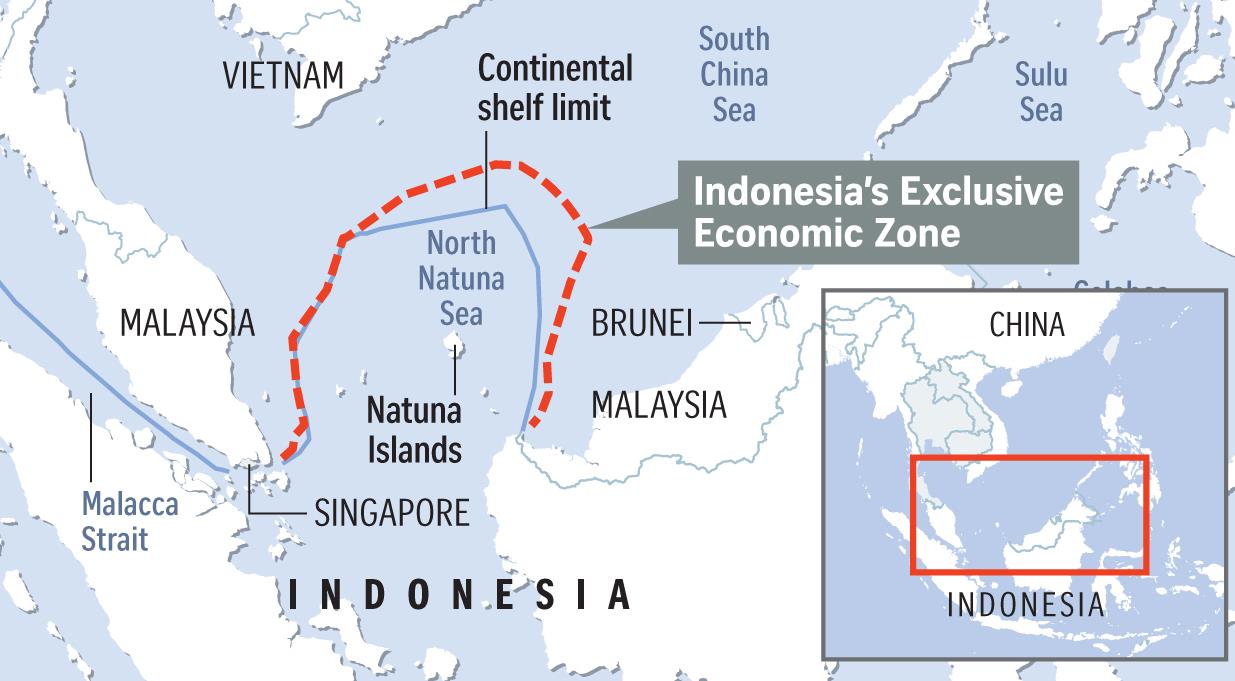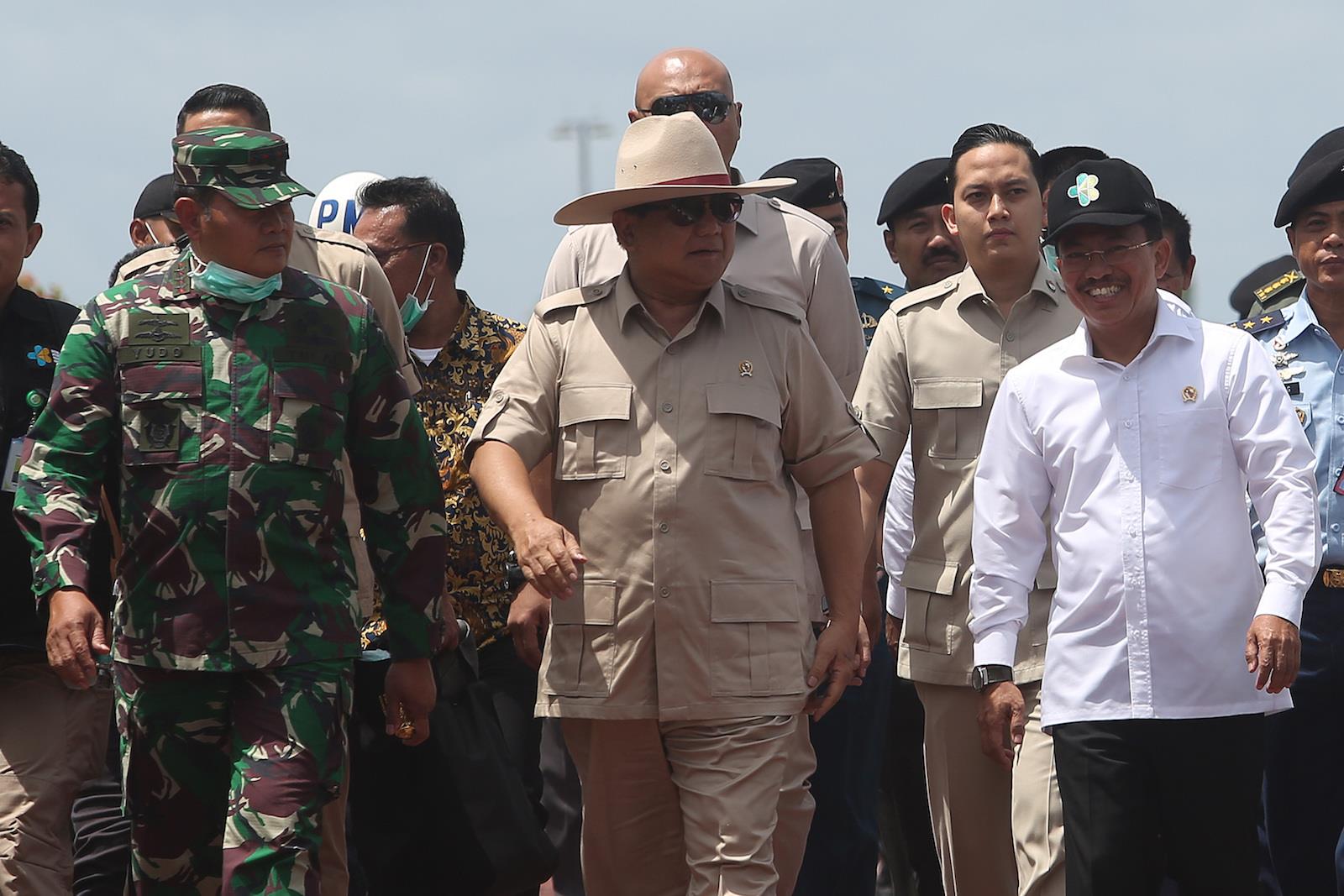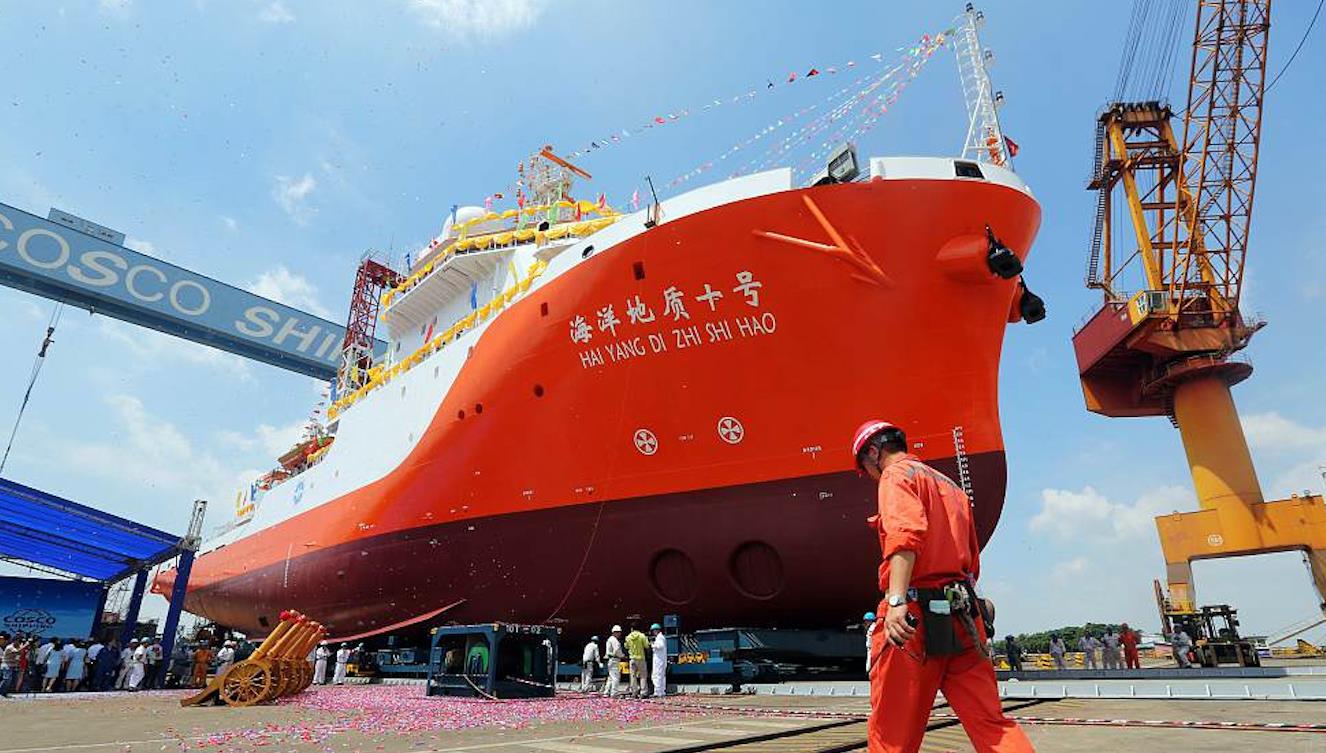(MENAFN- Asia Times) JAKARTA – When Britain's Premier Oil entered into a joint venture last year with state-owned Russian oil giant Zarubezhneft to exploit the Tuna natural gas block in the North Natuna Sea, upstream regulator SSK Migas said the deal would strengthen Indonesia's Sovereignty in the area.
Fast forward a year and almost the opposite has happened with officials struggling to explain why a Chinese survey vessel was allowed to spend seven weeks conducting intensive seabed mapping inside Indonesia's economic exclusion zone (EEZ) south of the Harbour energy concession.
The 6,900-tonne Haiyang Dizhi 10 and its Chinese Coast Guard (CCG) escort pulled out of the area on October 22, four days before the start of the three-day virtual Association of Southeast Nations (ASEAN) summit.
It has done that before, sailing to the Fiery Cross Reef in the disputed Spratly Islands for replenishment in late September before returning on October 4 to continue its unlawful research.
This time, ship-tracking data shows it heading back to its homeport of Guangzhou, but the Chinese Coast Guard cutter 6305 remains in the vicinity of the drilling rig where appraisal operations will continue for at least another month.
Analysts say the survey ship's extended stay has served as a tacit recognition of China's vaguely-defined nine-dash line of claimed historic sovereignty, which intrudes into Indonesia's EEZ near its confluence with Vietnam's maritime border.
The Indonesian government has yet to protest the incursion, even though the Chinese ships were being watched most of the time by up to nine Indonesian Navy and Maritime Security Agency (BAKIMLA) patrol craft with apparent orders not to intervene.
“I think Indonesia is hedging its bets and not doing anything that will lead to increased tensions,” Australian Strategic Policy Institute (ASPI) analyst Malcolm Davis told Asia Times.“If the presumption is that China will be satisfied with that, then Indonesia is in for a big shock. Give the Chinese an inch and they will take a mile.”

Source: Twitter
Bill Hayton, an associate fellow at London's Chatham House and author of a book on rising tensions in the South China Sea, agrees.“If the Indonesian government has not already sent a protest, then it needs to do so urgently or it will risk creating a precedent and losing its rights,” he was quoted as saying this week.
Diplomats have been unable to determine why the Indonesians have kept quiet. As one put it:“We share your perceptions and concerns, but some think it may not be the time to anger our 'northern friends' given the recent moves in the South China Sea.”
Although the Indonesian Armed Forces (TNI) have always enjoyed a much closer relationship with the United States, China did join the unsuccessful effort to salvage the Indonesian submarine KRI Nanggala-402, which sank with all 53 hands aboard north of Bali last April.
More importantly, Chinese companies are playing a leading role in Indonesia's entry into the global supply chain, with its flourishing nickel industry acting as the foundation of a highly-promising lithium battery and electric vehicle industry.
Indonesia's point man on China, Maritime Affairs and Investment Coordinating Minister Luhut Panjaitan, sought to brush off the intrusion during a speech last week in Washington, where he met with US National Security Adviser Jake Sullivan.
He said the Indonesian government respected freedom of navigation in the North Natuna Sea, adding:“We have discussions with our contact partners in China, we agree to disagree in some areas, but I think we're able to manage so far.”
“We don't feel we have issues with China,” Panjaitan went on in response to a question.“It's like brothers and sisters. Sometimes you have problems, but don't make it into a big problem. I don't see it as a big deal as long as they don't claim officially that it belongs to us (China). That's different.”
Davis and other maritime experts point out that freedom of navigation is not the issue and note that apart from an incident in 2016, in which a Chinese Coast Guard vessel seized back a captured trawler in Indonesia's territorial waters, Jakarta has appeared to back off when confronted with more robust pressure.
“This is quite serious,” says Davis, a former Defense Department strategist.“The Indonesians may not want to rock the boat, but at some point, Jakarta is going to have to decide what to do with China. The Chinese are using soft power very successfully.”

Defense Minister Prabowo Subianto (C) visits an Indonesian Air Force Base in Natuna, Indonesia on February 5, 2020. Photo: Muhammad Fahmi Dolli/Anadolu Agency via AFP
With Defense Minister and prospective presidential candidate Prabowo Subianto staying strangely silent on the incident, Foreign Ministry spokesman Teuku Faizasyah had earlier said he could neither confirm nor deny that Indonesia was talking with China about the incursion.
Asked last week whether the ministry had any further comment, he told Asia Times:“There are diplomatic exchanges between the PRC and Indonesia on various issues of mutual concern, including maritime issues.”
Adding to the mystery is the failure of Indonesia's mainstream media to highlight the story when it usually pays close attention to breaches of national sovereignty. Academics have been unable to provide an explanation for the low-key response either.
While it might appear naïve, Indonesian officials have often said that because the United Nations Convention on Law of the Sea (UNCLOS) lays out the coordinates defining the country's EEZ, there is nothing to argue about with China.
Chinese ships have carried out similar mapping operations in Vietnamese and Malaysian waters, but oil experts say the concentrated nature of the Haiyang Dizhi 10's search raises questions about whether there will be a next step – and what that will be.
China has attracted little interest from global drillers because of the overall poor quality of its hydrocarbon resources, but earlier this year Beijing decided for the first time to allow foreign firms to explore for and produce oil and gas within its borders.
Its domestic production in 2019 was put at 3.8 million barrels a day, but it imports 70% of the crude oil it refines and nearly half of its natural gas consumption. China draws 30% of its crude imports from Saudi Arabia and Russia and maintains a strategic reserve capacity of at least 240 million barrels.
The Tuna block was awarded to Premier Energy back in November 2007. When gas was discovered there in April 2014, the British firm sold a 50% stake to Zarubezhneft, which has long had ties with PetroVietnam, Hanoi's state-owned oil company.
“In addition to its economic value, the Tuna block has a strategic geopolitical role because it is located close to the border with Vietnam,” SSK Migas head Dwi Soetjipto said at the time.“The operation of the Tuna block will further strengthen Indonesia's sovereignty in the region.”
The Haiyang Dizhi 10 began its unprecedented seabed survey in late August, close to where the Noble Clyde Boudreaux, a rented Malaysian oil rig, launched a two-well drilling program three months ago to prove up a field estimated to contain about one trillion cubic feet of gas.

The Haiyang Dizhi 10 in a file photo. Image: CGTN
The Indonesian government and Harbour Energy signed a memorandum of understanding last year that will allow the company to pipe its gas 90 kilometers across the border into Vietnam's offshore pipeline network.
Zarubezhneft recently bought out compatriot Rosneft's shareholdings in two offshore projects, along with the existing 400-kilometer Nam Con Son pipeline stretching southeast from the coastal town of Vung Tau.
Petroleum experts say the resource would have to be more than double its current size to justify running a 220-kilometer pipeline to the three West Natuna fields owned by Premier and two other firms that have been supplying piped gas to Singapore for the past 25 years.
Now severely depleted, a disruption to that supply in July – and an unrelated drop in pressure from Premier's maturing Corridor Block off South Sumatra – may encourage Singapore to increase its dependence on liquified natural gas (LNG).
The city-state, which relies on gas from Indonesia and Malaysia and also seaborne LNG cargoes for 95% of its electricity, has already extended its first LNG receiving terminal and is planning a second to come on stream in 2025-2030. Ambitious solar energy projects are also in the works.
Interestingly, the Haiyang Dizhi's search pattern remained confined to an area south of the Tuna block and as far as 112 kilometers inside Indonesia's EEZ, roughly conforming with what is believed to be the extent of China's hazy nine-dash line.
Experts say the ship would have been taking samples from the seabed, looking for oil seepages and other resource data and also conceivably trying to determine whether the topography and relatively shallow water could support the construction of an artificial reef.
“They will have got a treasure trove of information,” says one Jakarta-based oil analyst, who is familiar with the Natunas and believes the Chinese have ended the current phase of their research.“That tells them a lot, not just from a resource point of view but also for future military purposes.”
MENAFN27102021000159011032ID1103055282